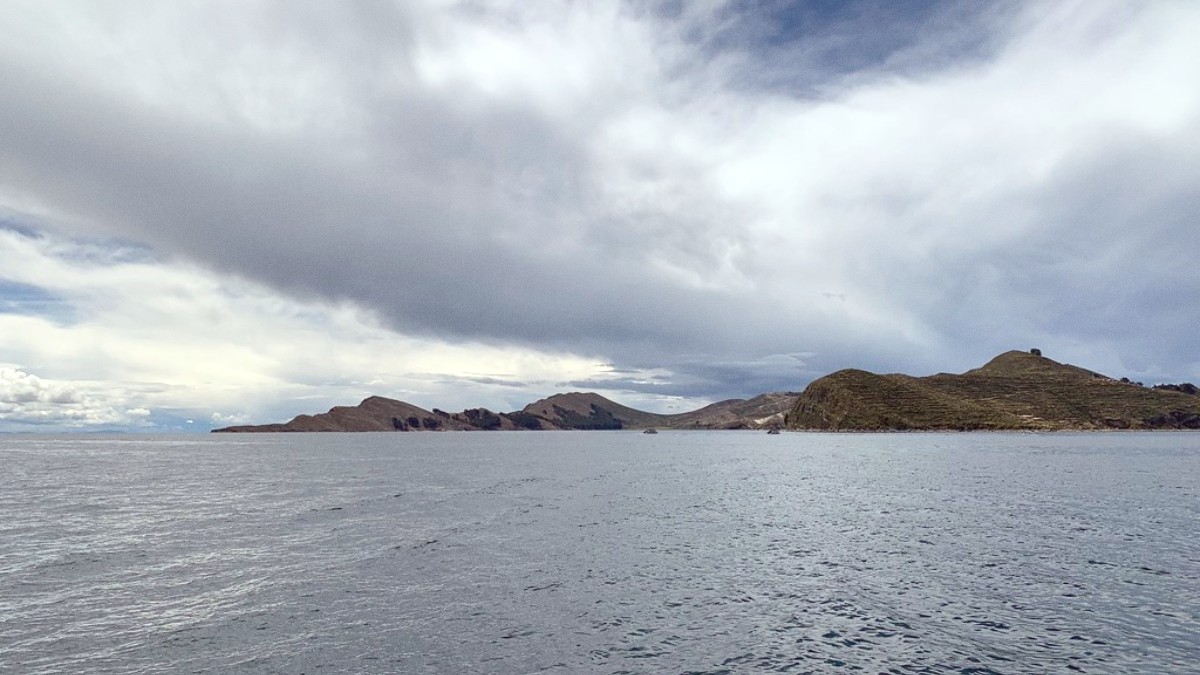
Bolivia
Located very close to Isla del Sol, this smaller island is also sacred in Inca mythology. It features the ruins of Iñak Uyu, an Inca "Temple of the Virgins" or Acllahuasi, where young women lived and served the Inca state and religion.
Its quieter atmosphere contrasts with the more visited Isla del Sol, offering a serene experience for those seeking tranquility.
Options for getting to nearby areas from Isla del Sol or Copacabana.
Copacabana serves as the bustling gateway town to Isla del Sol. Many travelers use Copacabana as a base for a night before or after visiting the island.
The Lake Titicaca region itself provides a natural escape, offering magnificent landscapes and serene environments.
Lake Titicaca comprises an unique natural environment, recognized for its biodiversity and cultural significance. The lake holds status as a protected area due to its ecological importance.
The most striking natural landscape is the view of the Cordillera Real (Andes mountain range) across Lake Titicaca, offering dramatic snow-capped peaks.
Isla del Sol is entirely rural, with traditional Aymara farming communities. The island itself is hilly, presenting continuous ascents and descents during hikes.
Isla del Sol holds small, rocky shores and inlets, not suitable for swimming due to the extremely cold water.
The dry season on Isla del Sol brings consistently clear skies.
Beyond Isla del Sol, other sites provide deep historical and cultural insights into Bolivia's past.
An ancient pre-Inca archaeological site, Tiwanaku rests about 70 kilometers (43 miles) west of La Paz, between La Paz and Lake Titicaca.
Isla del Sol itself presents a living cultural experience with its rural villages and agricultural areas.
Located in Copacabana, this basilica is a highly revered pilgrimage site in Bolivia.
Explore the local markets in Copacabana for a glimpse into daily life and unique goods.
Engage with the cultural events and their local significance during your visit.
Community celebrations often feature traditional music, dance, and processions.
Discover intricate handwoven textiles and other artisan goods, reflecting local patterns and techniques.
Bolivia presents diverse landscapes and cultural experiences that complement a visit to Isla del Sol. Consider extending your trip to explore more of the country.
Spend 2-3 days in La Paz to acclimatize to the altitude properly. Explore its unique Teleférico (cable car) system, the Witches' Market, numerous museums, and bustling street life.
A world-renowned destination for its surreal, vast white landscape. Typically, a 3-day/2-night tour departs from Uyuni (reachable by bus or flight from La Paz).
The Uyuni tour often includes visits to the unique train cemeteries, alongside desert lagoons, geysers, and other distinct rock formations.
Direct, frequent bus services connect Copacabana to La Paz. From La Paz, catch domestic flights to Uyuni, Sucre, or Santa Cruz for onward travel.
Direct bus services operate from Copacabana to Puno, Peru, with border crossing assistance often part of the package. From Puno, buses and trains connect to other major Peruvian cities.
A popular route combines a visit to La Paz and Lake Titicaca (Isla del Sol) with the Salar de Uyuni tour. This provides a diverse experience of Bolivia's highlands.